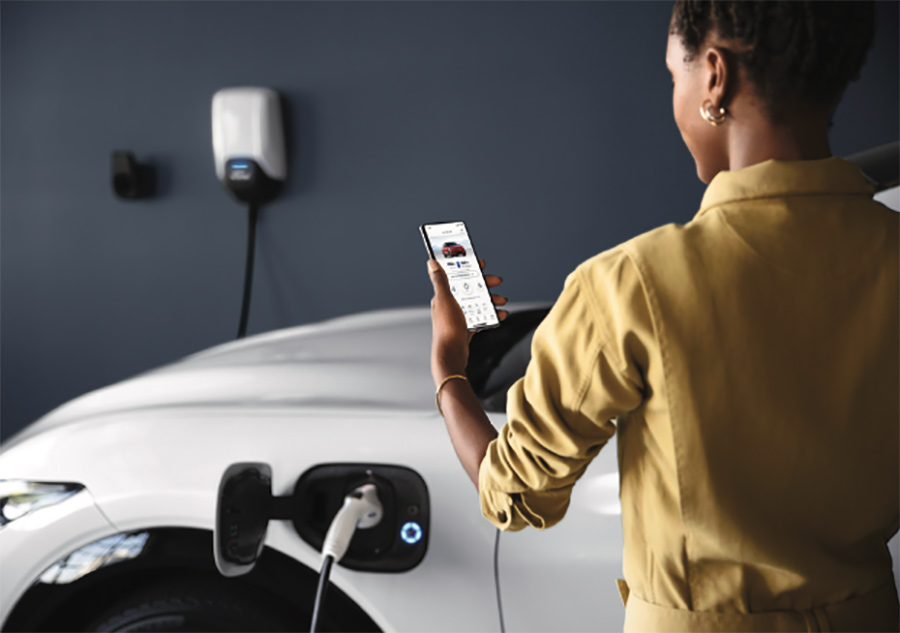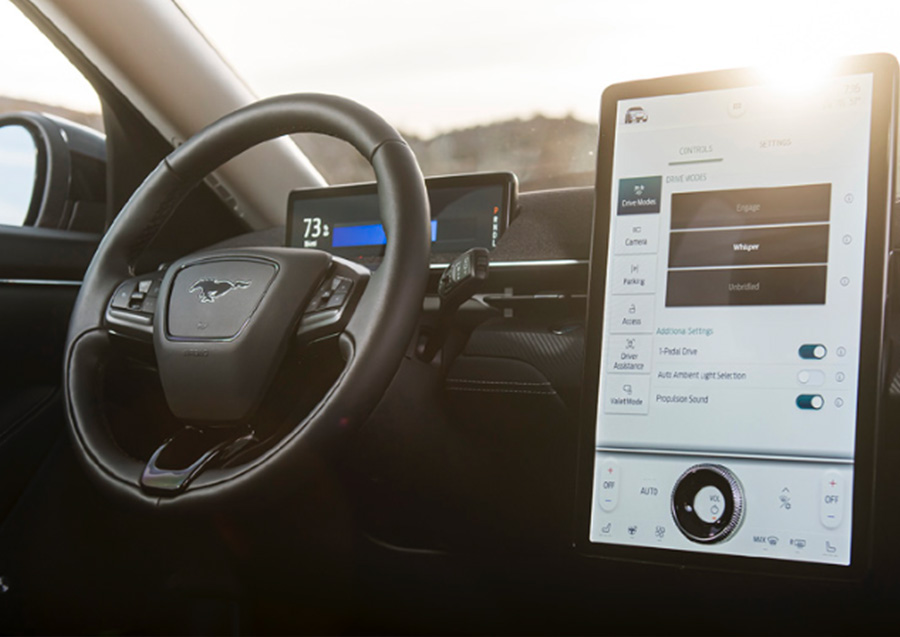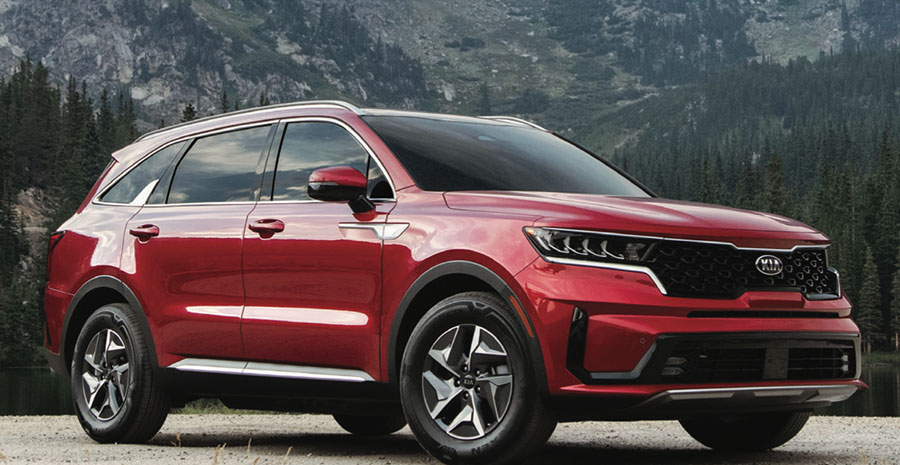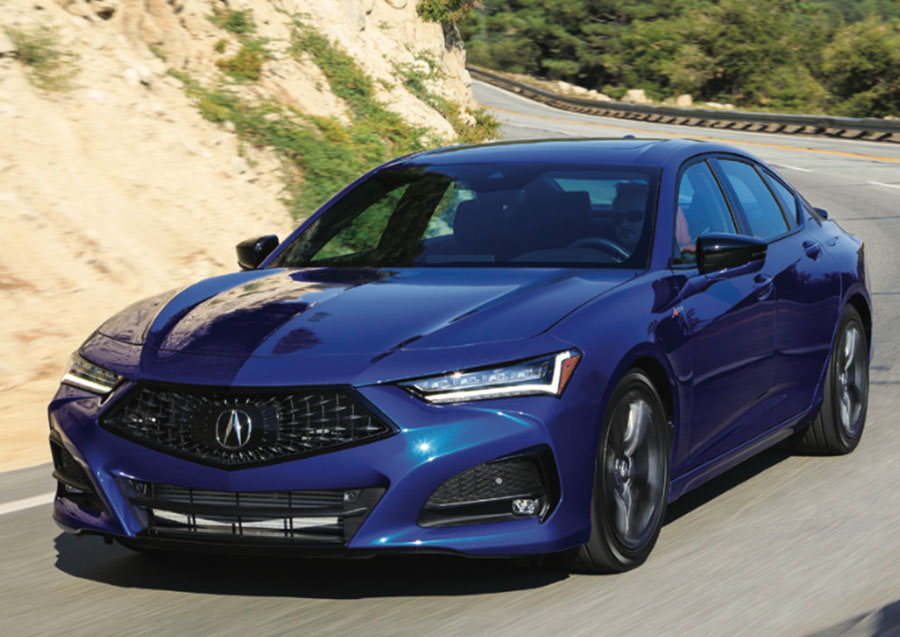CSU Grad Davis Bryant Discusses His Rise as a Pro Golfer
Colorado State grad Davis Bryant opens up on his path to the pros and what keeps him busy when he’s off the course

YOU’D BE FORGIVEN for not knowing that pure electric vehicles (EVs) made up only two percent of new car, truck and SUV sales last year. In the short term, the amount of news they generate is completely out of proportion to their sales numbers. But that will change dramatically over the next few years, and the majority of industry ex- perts believe that they will account for 35-65% by the end of this decade. That is akin to going from horses to cars a century ago.
Powering that monumental shift are several factors. Amongst them:
• Europe and the United Kingdom are on track to making the ownership of both new and used vehicles powered by internal combustion engines (ICE) flat out illegal, or at least so cost prohibitive that they will be scrapped. In countries like France, owners of even a zippy, affordable car like the VW GTI will end up paying the equivalent of $3,000-$5,000 per year in extra taxes on it, rising every year till it is impossible to justify keep- ing it on the road.
• Many other cities and states around the world will ban the use of ICEs over the next five years. This is as much about cutting air pollution, which contributes to higher death rates from respiratory issues for urbanites and people living in the surrounding countryside.

• Battery tech is improving at a rapid pace; the price per kilowatt/hour (kWh) is declining rapidly enough that it is expected that EVs will cost the same as ICE-powered vehicles of the same size, power, “real world” range and feature content within five to seven years. Solid-state batteries (SSBs) are right around the corner from companies like Toyota/Panasonic, Samsung/ Hyundai and Colorado’s own Solid Power, who is working with several car companies to be a supplier. They’re more reliable, easier to package, safer in a crash and their range is less affected by temperature.
• EVs are inherently more reliable and need less maintenance than conventional cars. They have 30-40 percent fewer moving parts, they don’t need oil changes and their brakes last longer since they use “regeneration” to harvest energy when slowing down instead of relying solely on friction from pads rubbing against rotors.
• The near-term effects of climate change are becoming more readily apparent to the general population, with stronger storms and more erratic weather being amongst the most obvious. This has led to increased interest in vehicles that don’t have as big a carbon footprint. A caveat is that this footprint also includes the manufacture of said vehicles and that the source they get the electricity they run on from (coal, natural gas or renewables).
• Car companies are commit- ting to “electrification” of all their vehicles over the next few years, but that doesn’t mean they will all be pure EVs. Many will be mild hybrids, with a tiny battery and electric mo- tor sandwiched between the engine and transmission to cover turbo lag, smooth out automatic stop-start systems and make them quicker off the line. Companies from Jeep to Mercedes are doing this now. Others will be conventional hybrids like the Toyota Prius; you never plug them in but they get great fuel economy. The next step up is a plugin hybrid (PHEV) which can go 20-40 miles without the gasoline engine kicking in, and are usually more powerful and faster than gas- only versions of the same vehicle. The Audi Q5 55e is a great example, almost as fast as the SQ5 but able to average mid-30s mpg.
• Many legacy companies are committing to not producing any more ICEs: Jaguar in 2025, Volvo by 2030 and even General Motors by 2035. Tesla, which has a 70-plus percent market share now, will be a dominant but minority player by the end of the decade; of all the other EV startups grabbing headlines, only a few will survive, probably Rivian and Lucid Motors. Over 50 new EVs are due stateside in just the next two years, while over 100 new offerings will hit the world stage.
As battery tech matures this will make sense. If you can have 500-plus horsepower, 1,000 miles of range, ultrafast recharging in minutes, less maintenance and better reliability, why would you pour dino-juice into your ride? Some of us will miss the sound of performance engines or shifting for ourselves, but we too are a dying breed. While we have a few more years left to indulge, long term roaring exhausts and stick shifts are as dead as the buggy whips. Here’s a sampling of some of the latest offerings in different categories.
EPA Ratings/Range: 270 miles
0-60mph: 4.8sec
Price as tested: $56,200*
*Before $7,500 federal tax credit and up to $2,500 CO tax discount
The first mainstream competitor to the Tesla Model Y, Ford’s EV is quick (0-60 in between 3.5 and 5.1 seconds depending on model), roomy, and it looks less like a refugee from the depths of the ocean than Elon’s crossover. Inside there’s a blend of trad controls and a massive, 15.5in vertical touchscreen. The Mach-E is very quiet and rides well—unlike the Model Y—but it doesn’t quite engage the driver like you’d expect of some- thing bearing the Mustang name. Like a Tesla, it gets over-the-air updates and real-time status on the 13,500 independent charging stations that are part of Ford’s network. The fastest of these, using DC fast chargers, will (theoretically) add over 50 miles of range in 10 minutes, and charge the standard 68.0-kWh (kilowatt hour) battery from 10 to 80 percent in 45 minutes. EPA range is 211 miles for the normal AWD model; the op- tional 88.0-kWh extended-range version should go 270 miles. A Tesla Model Y can still be had with more range, but this Mach-E is amongst the first real head-to-head alternatives.

EPA Ratings/Range: 24/24/24mpg 0-60mph: 5.1sec
Price as tested: N/A
The best-selling vehicle in the world just under- went a complete redesign, and while there is a pure EV version coming, it’s the hybrid F150 that is most intriguing right now. It sandwich- es a 44hp/221lb-ft electric motor between the twin turbo 3.5L V6 and the 10sp transmission. Total output goes to 430hp/570lb-ft and EPA ratings increase to 24/24/24mpg. Its 1.5kWh battery never needs to be plugged in. Its 5.3sec 0-60mph sprint is almost a second faster than the non-hybrid, and you can also use the truck as a 7.2kW mobile generator for camping, worksite tasks, or keeping the heat on, if you live in Texas. The PowerBoost option costs $1,900 more, and seems a good value, as thus equipped, the F150 tows better than the F150 diesel yet gets a real world 2-4mpg bump in fuel economy.
EPA Ratings/Range: 39/35/27mpg 0-60mph: 7.9sec
Price as tested: $38,205
The latest Sorento is also of a new generation, and slots in between compact crossovers like the Toyota RAV4 and midsize or larger ones like the Highlander or Kia’s own Telluride. It comes in myriad versions, of which the hybrid is the most intriguing—for now. It uses a 177hp 1.6-liter turbo and a 1.5kWh battery and electric motor to not only net ratings of 37mpg average, but (according to its large, high resolution instrument displays) the Sorento Hybrid actually achieves it. The Kia is also powerful, with a 60hp/194lb-ft hit of torque punting it off the line; 60mph should take less than eight seconds. Responsiveness is best in sport mode; in the others there can be some odd pauses in delivery. The battery and electric motor also allow the Sorento to glide along on electrons at highway speeds, or when the computers decide the time is right. About the only downside is that this version is front wheel drive, which will limit its appeal in the Rockies. If the lack of AWD is a problem, there is this…

EPA Ratings/Range: 94mpge/38mpg gas 0-60mph: 5.1sec
Price as tested: $49,461*
*Before $7,500 federal tax credit and up to $2,500 CO tax discount
Toyota shows the blend of attributes that make a plugin so enticing: the RAV4 Prime accelerates like a bat out of hell, will run up to 42 miles on electricity, yet has effectively unlimited range, since, when there is no time or place to charge, it can keep cruising along on good old fossil fuel. The Prime has all the inherent goodness of the normal RAV4 hybrid in terms of all season, all weather practicality, and spices it up with midsized 18.1- kWh battery pack and two electric motors (one for each axle); all in there are 302 ponies in the stable, making this the second fastest Toyota you can buy. Its 0-60mph sprint of 5.4 seconds means only the Supra is quicker. Its mixed average fuel economy is 38mpg, and its smaller battery means you can fully charge it in 12 hours using a good old-fashioned 120-volt outlet if 240 isn’t available at home. The latter is pretty much a necessity for pure EVs, since their bigger batteries would mean days and days of charging on the lower voltage. The Prime’s down- side is weight—it is almost 575 heavier than the normal hybrid. This has detrimental effects on ride and handling, and is probably the biggest knock on plugins in general. In the Prime’s case, there’s also the fact that Toyota is building so few, that dealers are selling them for $5-7,000 over MSRP. Otherwise, after the federal $7,500 tax credit and state incentives, the Prime would cost less than loaded RAV4 hybrid, making it a really logical choice. But if they can up production capacity to meet demand, the Prime shows how terrific such a “bridge” technology like this can be, until EV cost reaches parity with good old gasoline vehicles.
Finally, if all this is too much, there are some great new gasoline rides out there, like this one:

EPA Ratings/Range: 21/29/24mpg 0-60mph: 5.9sec
Price as tested: $47,275*
*Estimated $6250 federal tax credit and up to $1,500 CO tax discount
Acura’s return to its roots as the first premium, sporty Japanese brand continues with the all-new TLX. Calling from the same playbook that has made the RDX crossover such a hit, it is well built, has very sporty handling, and looks dramatic, with an extra long hood and stance wide enough to recall old Pontiac advertisement. Its Super Handling AWD system and control-arm front suspension imbue it with superb dynamics; it turns in adroitly and tracks true. Its current 272hp/280lb-ft, 4-cylinder engine is only adequate for this class (0-60 takes 5.9 seconds); a BMW 330i or Audi A4 will smoke it. The forthcoming 355hp Type S model will undoubtedly perform better. Yet the TLX undercuts its German rivals by a substantial margin, and based on historical precedent, is likely to be a very good long-term play in reliability. Looks like Mr. Peabody set the Wayback Machine just right.

This article was also featured in the April Issue of Colorado AvidGolfer.
Colorado AvidGolfer is the state’s leading resource for golf and the lifestyle that surrounds it, publishing eight issues annually and proudly delivering daily content via coloradoavidgolfer.com.
Colorado State grad Davis Bryant opens up on his path to the pros and what keeps him busy when he’s off the course
The staff at Dream Makers Landscape is ready to help you enhance the look and feel of your property with our exceptional landscaping projects